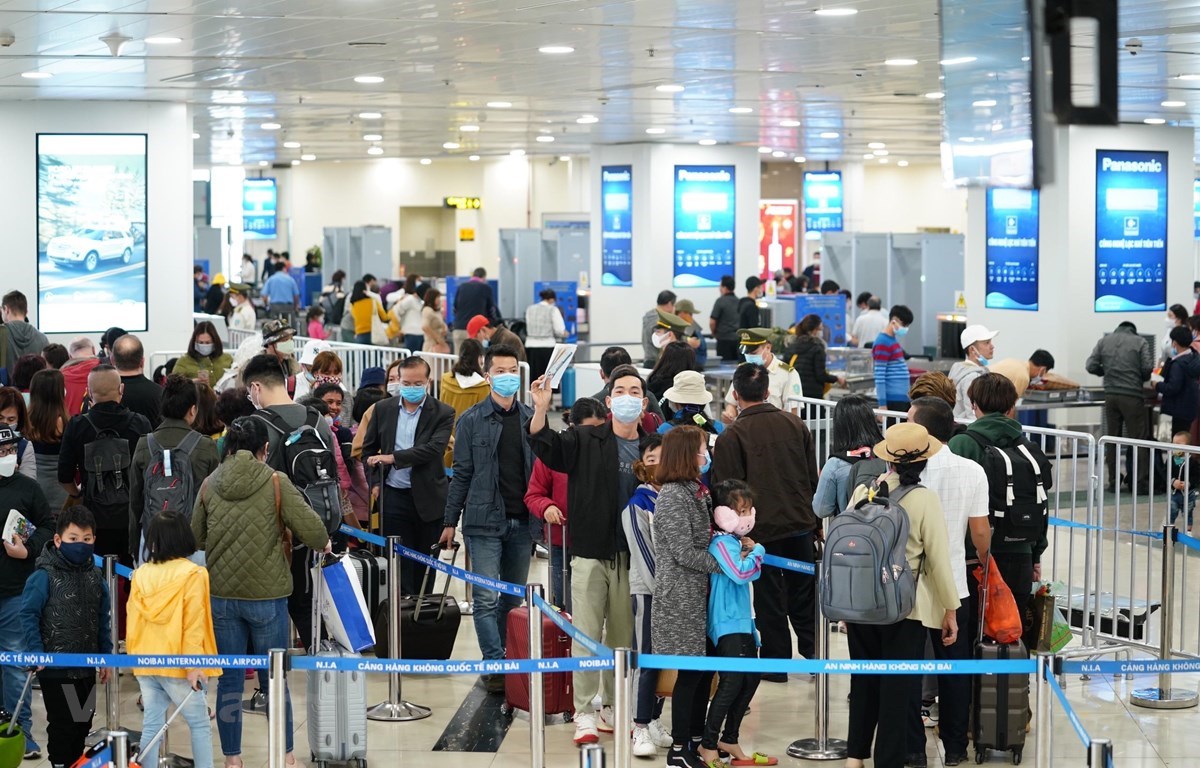Aviation industry seeks to promote post-COVID-19 recovery

Hanoi (VNA) - The aviation industry and localities need to work together to push development, helping the industry gradually recover from the impact of the COVID-19 crisis, said economic experts.
The Civil Aviation Authority of Vietnam (CAAV) predicted it will take 2-3 years for the aviation market to return to the way it was in 2019, if the COVID-19 pandemic is brought under control soon.
Speaking at a seminar on Vietnamese aviation industry’s recuperation and economic recovery held on May 30, deputy director of CAAV Vo Huy Cuong said the domestic aviation market is gradually recovering from the COVID-19 pandemic, with the number of flights reaching 80 percent compared to those at the peak Lunar New Year (Tet) period.
However, the market still faces difficulties, with international routes yet to resume, he said.
The Vietnamese aviation industry and airlines are striving to seek solutions to resume air routes as usual, Cuong said, noting that only when all immigration and quarantine barriers are removed, could airline activities become frequent again.
According to Cuong, since April 28, the CAAV allowed a gradual increase in the frequency of flights and the reopening of air routes. Airports such as Noi Bai, Tan Son Nhat or Phu Cat have seen a huge number of passengers.
The aviation industry has taken measures to make the most of opportunities and promote sustainable development, and it is ready to welcome the new wave of international holiday-makers, he said.
Attention will be paid to ensuring safe travel, and search for opportunities to resume pre-pandemic air routes, Cuong stressed.
Chairman of the FLC Group and President of Bamboo Airways Trinh Van Quyet said the Government and ministries have stepped in and have drastic solutions to address the difficulties facing the aviation industry as well as airlines.
Bamboo Airways has reopened 90 percent of its domestic routes, but the increase of flights still depends on travel demand, Quyet said.
Bamboo Airways previously operated 150 flights per day, but now operate at half that capacity.
If the travel demand returns to normal in June or July, the airline will have the same number of flights as before the pandemic, Quyet said.
While acknowledging that the industry is heavily affected by the COVID-19 pandemic, economic expert Tran Du Lich said the situation that the aviation industry is facing will be like a tree without water. The roots are still good, it just needs a bit of “rain” to help it sprout.
It will take time to reopen international routes, so stimulating the domestic aviation demand is a must, he stressed.
 All airlines have increased domestic flight frequencies and are waiting for the re-opening of international routes to fully restore their operation (Photo: VietnamPlus)
All airlines have increased domestic flight frequencies and are waiting for the re-opening of international routes to fully restore their operation (Photo: VietnamPlus)
According to Le Xuan Nghia, former deputy chairman of the National Financial Supervisory Commission, when the price of airline services are reduced, the tourism demand will be stimulated. However, airlines should not reduce prices indefinitely.
There has recently been an unhealthy competition among airlines, and this is only suitable for the commodity business, Nghia said.
The Government needs to control and create equal development among airlines, he suggested.
According to Nghia, Vietnam has succeeded in controlling the pandemic, facilitating airlines to promptly recover their operation. The aviation industry needs to focus mainly on Northeast Asia and Southeast Asia, which have also done well at controlling the diseases.
Meanwhile, Vu Tien Loc, deputy director of Saigontourist Travel Service Co, Ltd said airfare deals and incentives for tourism activities introduced by airlines have a great impact on the development of travel agencies’ tourism products.
“Passengers will benefit greatly from promotional ticket programmes, while travel agencies can easily design and diversify tourism products at reasonable prices,” she said.
At the seminar, economic experts agreed that all ministries and agencies have to join hands to create spillovers in order to quickly revive the national economy, especially during the “new normal” period./.













